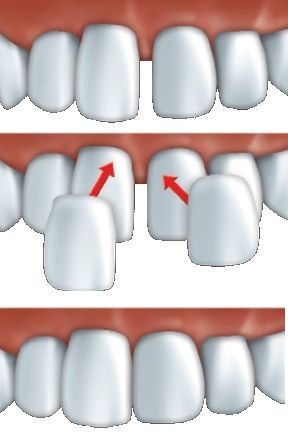
In the case of spacers or malpositioned teeth, dental veneers can be used. Thus, the gaps between teeth can be closed very easily with the help of veneers, creating a much more attractive smile. Similarly, in the case of teeth that are not severely malpositioned, dental veneer treatment can restore an aligned and uniform appearance to the teeth.
Teeth that are heavily stained and cannot be whitened by brushing and whitening treatments can be treated with dental veneers to restore a natural colour.
There are two types of dental veneers
- Ceramic dental veneers are stronger and more aesthetic than composite restorations. Ceramic veneers offer a more natural look due to their translucency.
- Composite dental veneers can pigment more easily over time and do not last as long as ceramic veneers.
{twenty}fatete_before.jpg:fatete_after.jpg{/twenty}
ac
The stages of treatment for dental veneers are
- Study model - this is the first stage in which study models are made and the final appearance of the veneers is modelled from wax in the dental laboratory. In the dental office, the shape of the dental veneers made in the laboratory is transferred with the help of temporary composite materials so that the patient can preview the final appearance of the work.
- Smoothing - after the patient's final agreement, the next step is the preparation of the teeth to create the necessary space for dental veneers. Due to the very small size of the veneers in general the preparations are very small, less than 0.5 mm.
- Amprint - after preparing the teeth, an impression is made and sent to the laboratory for veneering. While the veneers are being made in the laboratory, patients will wear a provisional restoration made in the office according to the initial study model.
- Cementing - after the dental veneers are made by the laboratory they are permanently tried in and cemented.
 RO
RO  EN
EN 